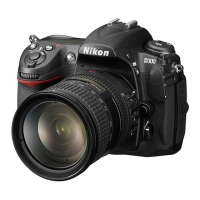Set Picture Control
(User’s Manual: D300S page 154; D300 page 150)
Set Picture Control allows you to choose a Picture Control for
a shooting session. Nikon’s Picture Control system lets you
control how your image appears in several ways. Each control
has a specific affect on the image’s appearance. If you ever
shoot film, you know that there are distinct “looks” to each
film type. No two films produce pictures that look the same,
color-wise.
Well, in today’s digital photography world, Picture Controls
give you the ability to impart a specific look to your images.
You can control Sharpening, Contrast, Brightness, Saturation,
and Hue in a customizable way by modifying one of Nikon’s
regular Picture Controls. Or, you can simply use the provided
Nikon Picture Controls to control your images. We’ll discuss
how to modify a Nikon Picture Control later in this section. In
the next section we’ll discuss how to save a modified Picture
Control under your own Custom Picture Control name. You
can create up to nine Custom Picture Controls.
I’ll refer to Picture Controls included in the camera as Nikon
Picture Controls, since Nikon does too. You may also hear
them called Original Picture Controls. If you modify and save
a Nikon Picture Control under a new name, it becomes a
Custom Picture Control. I’ll also use the generic name of
Picture Control when referring to any of them.
The cool thing about Picture Controls is that they are
shareable. If you tweak a Nikon Picture Control and save it
under a name of your choice, you can then share your creation
157

